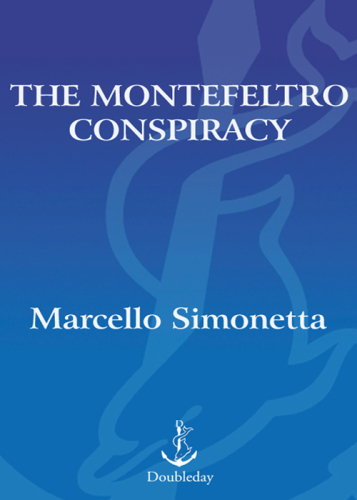
The Montefeltro Conspiracy
A Renaissance Mystery Decoded
کتاب های مرتبط
- اطلاعات
- نقد و بررسی
- دیدگاه کاربران
نقد و بررسی

April 1, 2008
These books offer two different approaches to the regime of Lorenzo de Medici, de facto ruler of Florence in the late 1400s. Unger's "Magnifico" is a popularly written yet scrupulous biography, while Simonetta's "Montefeltro Conspiracy" is new historical detection about a violent episode in Lorenzo's life. Unger (contributing writer, "New York Times") uses contemporary narratives and current scholarship to detail the life of a man initiated into politics at 16 and who consolidated his power against rivals, the Pazzis, after they famously tried to kill him (and did assassinate his brother) in the Duomo in 1478. Thenceforth, Lorenzo strengthened his hold over Florence. Facing an alliance between Pope Sixtus VI and Ferrante, king of Naples, he gambled everything, traveled to Naples, and threw himself on Ferrante's mercy, splitting the alliance and forcing his rivals to come to terms. By the time of his death, he was rightly hailed as the most sagacious politician in Italy, architect of the balance of power among the five principal realms of the Italian peninsula. Unger's comments on Lorenzo's shaky management of the family bank and misuse of the Florentine treasury are sage though hardly original. He also conveys the value of Lorenzo's vernacular poetry and famous patronage of the arts and letters.
The work by Simonetta (Italian & medieval studies, Wesleyan Univ.) is a bird of another feather, more brightly plumed. In a previously closed archive, he unearthed a ciphered letter from Federigo de Montefeltro, the famed humanist and condotierre duke of Urbino, to Pope Sixtus, written shortly before the Pazzi conspiracy of 1478. Drawing on a contemporary book on ciphers written by his own ancestor, Simonetta broke the letter's code. In a stunning act of historical sleuthing (moving the topic into greater depth and focus than Lauro Martines's "April Blood: Florence and the Plot Against the Medici"), he has unearthed solid evidence linking Montefeltro and the pope directly to the conspirators in a plot to assassinate the Medicis and end their rule of Florence. Simonetta concludes with intriguing speculation on why Botticelli, though a Medici loyalist, accepted a commission from Sixtus to paint the interior walls of the Sistine chapel in Rome, and he speculates on the political significance of Botticelli's most famous paintings, "The Birth of Venus" and "Primavera". Both books are warmly recommended for large public libraries, and academic collections will want Simonetta. [For "Magnifico", see Prepub Alert, "LJ" 1/08.]David Keymer. Modesto, CA
Copyright 2008 Library Journal, LLC Used with permission.

April 15, 2008
In Florence, on April 26, 1478, Lorenzo de Medici, soon to be dubbed the Magnificent, and his brother, Giuliano, were set upon by assassins during Sunday mass. Giuliano died, but Lorenzo survived and became one of the most accomplished of Renaissance figures as a patron of the arts and a skillful leader of the Florentine Republic. The assassination attempt, generally called the Pazzi conspiracy, was immediately blamed on a rival Florentine family, the Pazzi. Simonetta, a professor of Italian history and literature, has uncovered another layer of the plot. Aided by a recently decoded letter found in an archive in Urbino, Simonetta indicts Frederico de Montefeltro, the widely admired Duke of Urbino. Montefeltro, often referred to as the Light of Italy, was a classics scholar, a humanist, and a supposed friend of the Medicifamily. He was also a tough, ruthless mercenary quite at home in the cutthroat milieu of fifteenth-century Italian politics. This is a tense, absorbing book that workswell as a historical inquiry and areal-life detective story.(Reprinted with permission of Booklist, copyright 2008, American Library Association.)

























دیدگاه کاربران